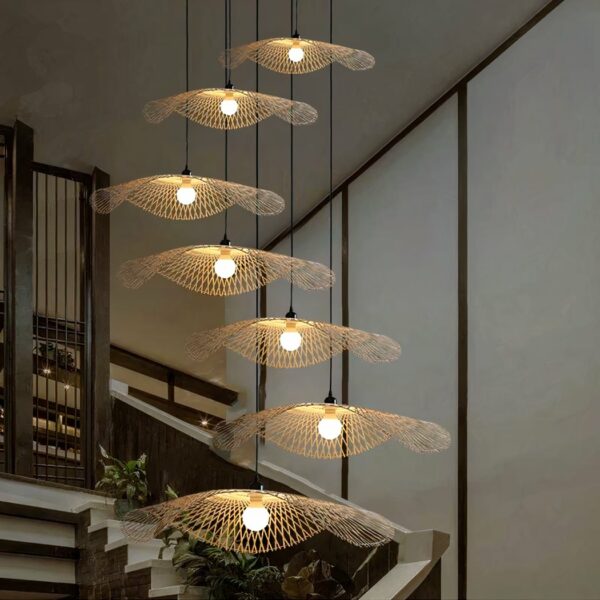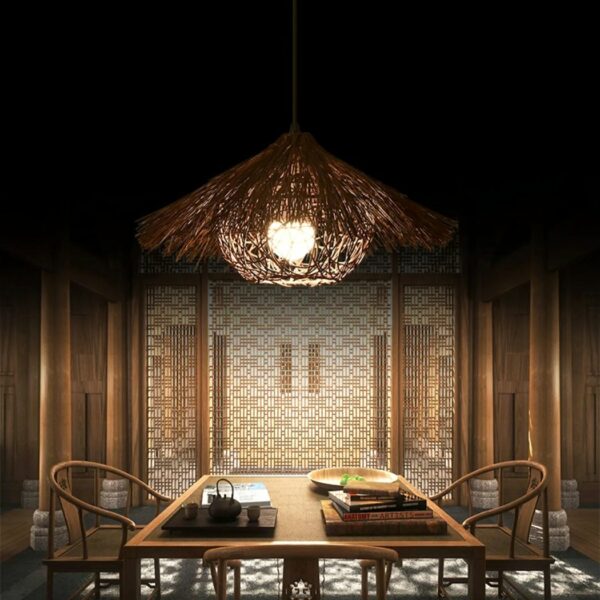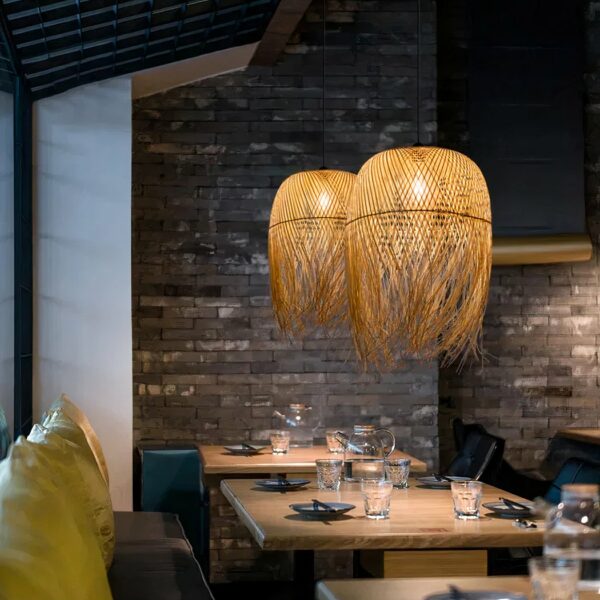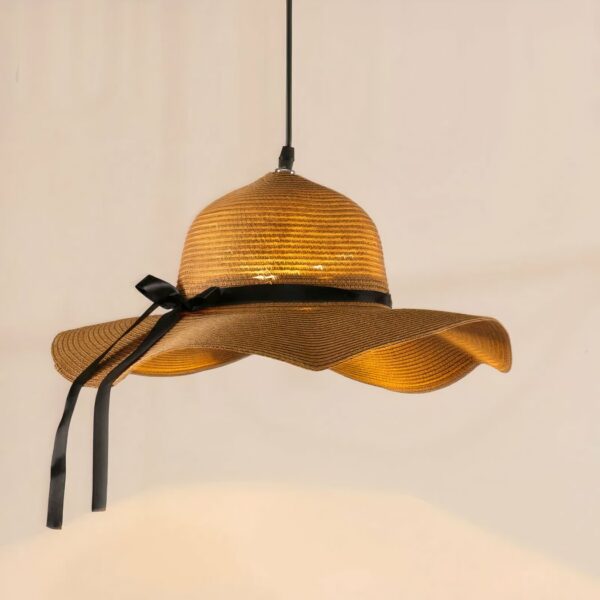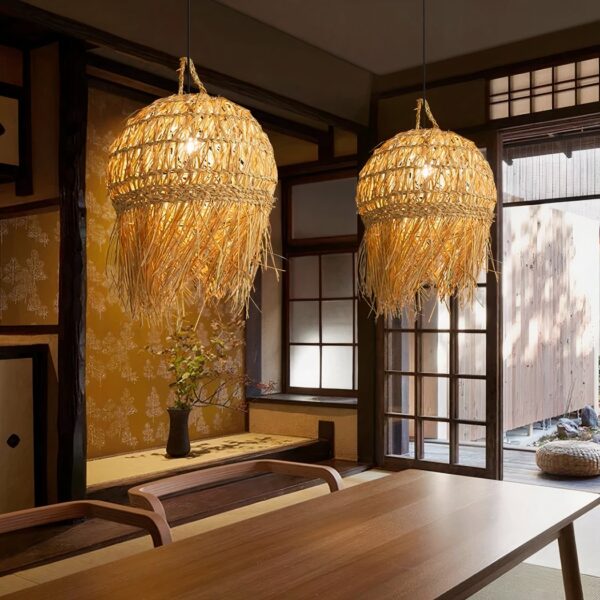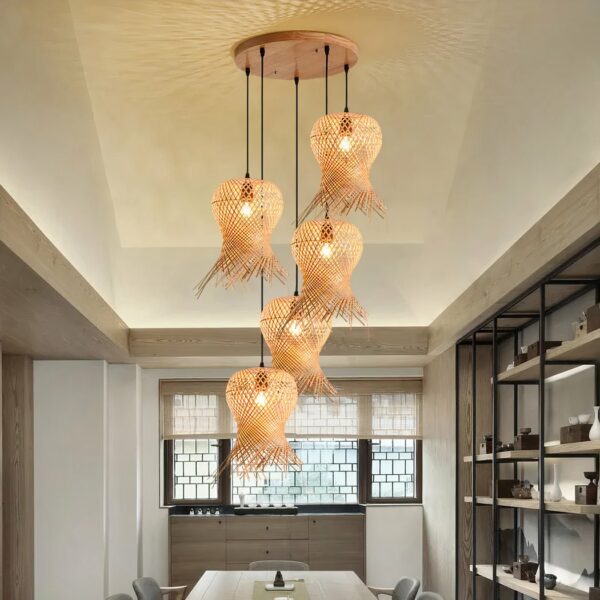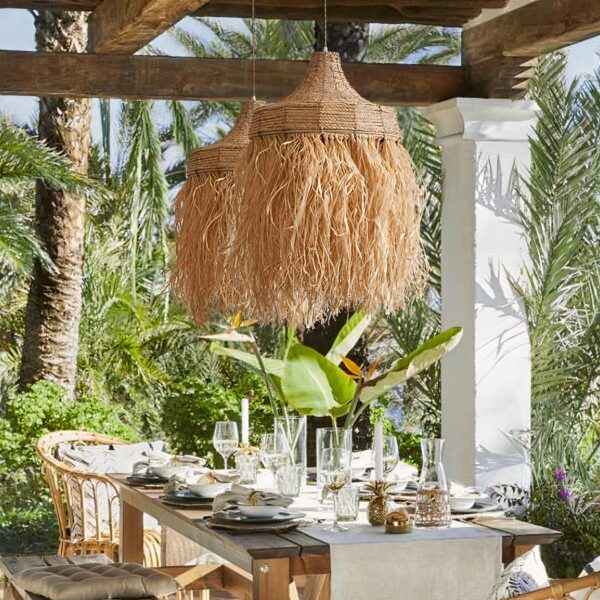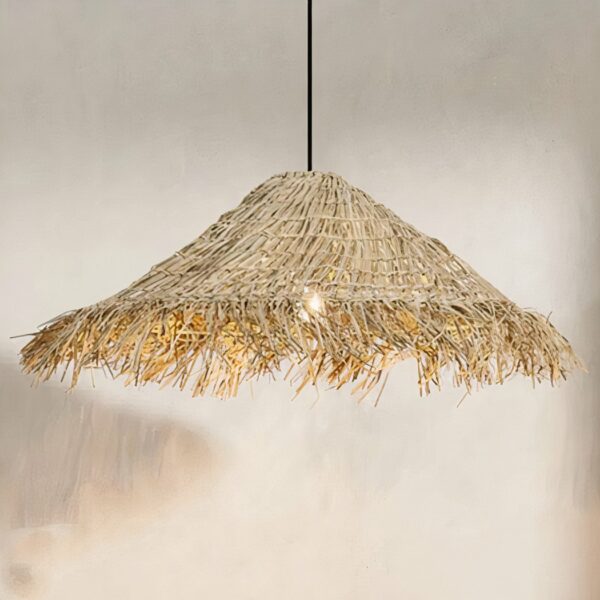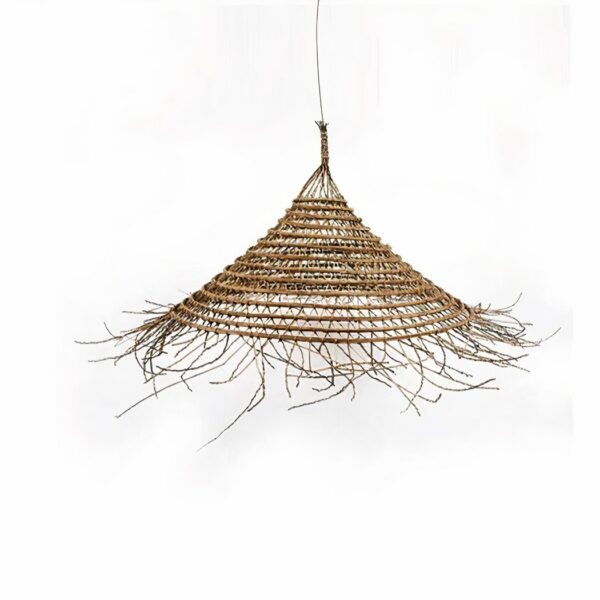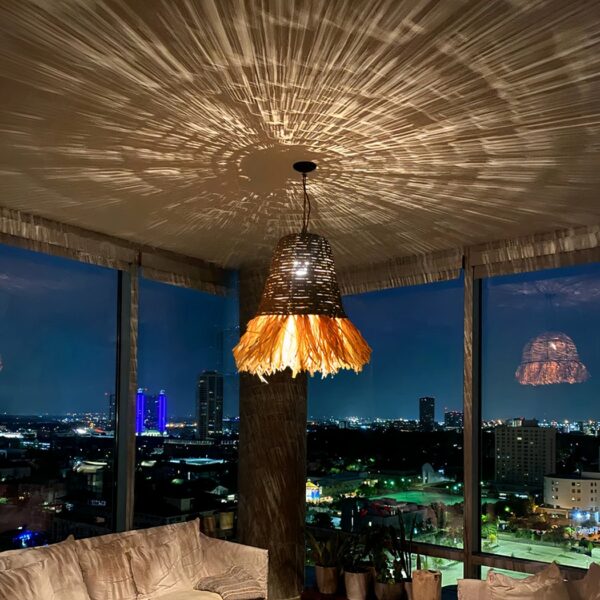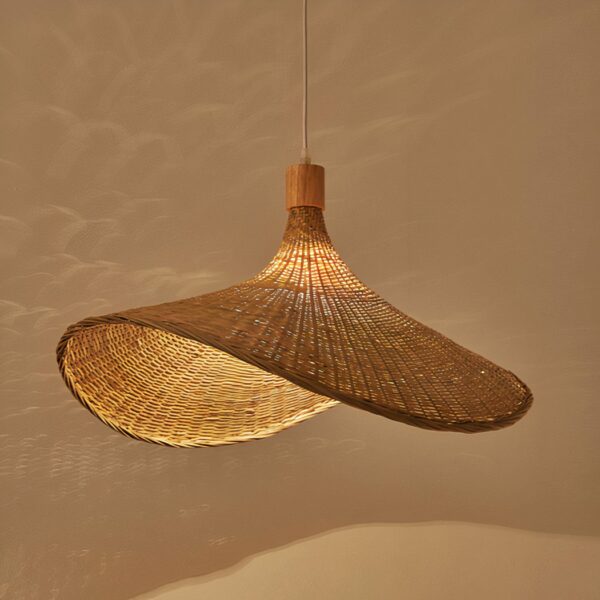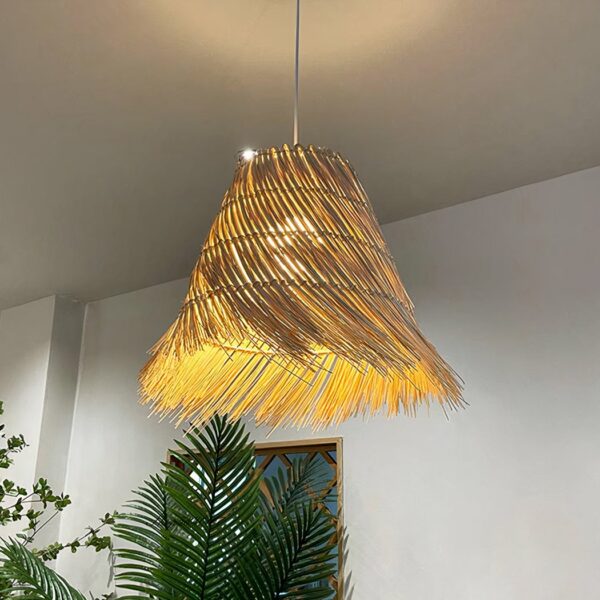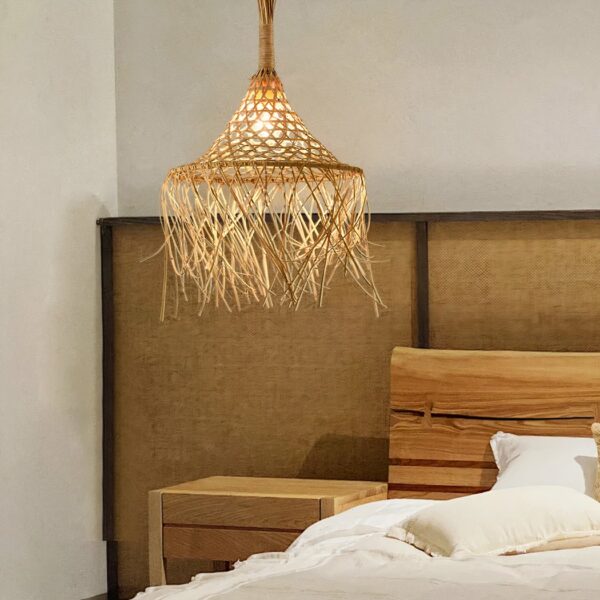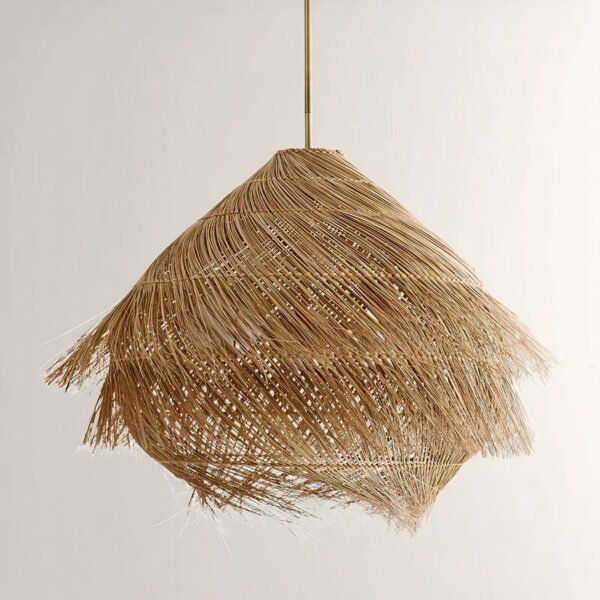Showing all 16 results
-
$121,70 – $220,40 Add to cart - $121,70 This product has multiple variants. The options may be chosen on the product page
-
$115,40 – $136,40 Add to cart - $115,40 This product has multiple variants. The options may be chosen on the product page
-
$104,90 Add to cart - $104,90 This product has multiple variants. The options may be chosen on the product page
-
$104,90 – $314,90 Add to cart - $104,90 This product has multiple variants. The options may be chosen on the product page
Showing all 16 results
Lighting your home with straw light fittings : warmth and authenticity
Straw lighting fixtures are an emerging trend in the world of interior design, bringing a warm, natural touch to any space. Made from organic materials, these beige straw pendants and handcrafted shades offer an authentic, bohemian alternative to conventional lighting.
In this article, we'll explore the different aspects of these lights, from their handcrafted manufacture to their impact on interior design, via the various models available on the market.
The straw lighting trend
Straw lighting fixtures have become a popular choice for those seeking a warm, natural interior design. These unique pieces bring a cosy, authentic ambience to any room, whether living room, bedroom or even outdoor space.
Their use of natural materials such as straw and their handcrafted nature make them prized decorative elements for those who appreciate the bohemian style and uniqueness of handmade products.
The different types of straw lighting
Straw lighting comes in a variety of shapes and sizes to suit all spaces and decorating styles. From elegant pendant lights to woven shades and simple woven hanging straw chandeliers, there's a wide choice of models available in specialist stores.
Moroccan straw hanging lamps, for example, offer exotic charm with their handcrafted braiding and use of natural fibers. For those looking for a simpler option, classically shaped shades add a touch of rusticity to any room.
Key features to consider
Straw lampshades are distinguished by their use of natural materials such as straw, giving them a warm, organic appearance. Their handcrafted braiding enhances the beauty of the plant fiber, creating unique patterns that catch the light in subtle ways.
These fixtures are often available in a range of sizes and shapes, allowing customers to choose the one that best suits their room and decorating style.
The impact of straw on interior design
The introduction of straw lighting fixtures into an interior can instantly transform the mood of a room. Their natural, handcrafted look adds a touch of authenticity to decor, creating a cosy, welcoming atmosphere. Strategically placed, these fixtures can become focal points in an environment, adding an interesting visual dimension while illuminating the surroundings in a soft, enveloping way.
Whether in a modern or more traditional setting, straw fixtures blend harmoniously with different decorating styles, bringing a touch of rustic charm to any room.
What are the differences between straw, wicker and rattan ?
Straw, wicker and rattan are all organic materials used in the manufacture of handcrafted products, including lighting fixtures. However, they have distinct differences in terms of composition and use.
Straw is made from the stalks of cereals such as wheat, rye or oats. It is often used in lighting fixtures such as lampshades for its natural look and light texture.
Wicker, meanwhile, is a variety of willow cultivated for its soft, flexible branches. It is used in basketry and furniture-making for its durability and ability to be woven or bent.
Rattan, on the other hand, is a tropical vine that grows in South-East Asia. It is prized for its strength, flexibility and lightness, making it ideal for furniture and lighting.
In short, although straw, wicker and rattan are all natural materials used in the manufacture of lighting fixtures, they differ in their composition and characteristics, influencing their use in a variety of handcrafted and decorative rattan and straw applications and hangings.
What size should I choose for a straw pendant ?
When it comes to choosing the size of a straw hanging, several factors need to be taken into account to ensure that it fits perfectly into the chosen area. First, consider the ceiling height of the room in which you plan to install the hanging. Opt for a size that will allow the suspension to hang at a comfortable height without being either too low or too high.
Also, consider proportionality to the room itself. In a large room, a more imposing pendant may create a striking visual effect, while in a smaller space, a more discreet pendant may be more appropriate so as not to visually clutter the space.
Finally, consider the intended use of the pendant. If it's intended to light a dining table, for example, make sure it's large enough to provide adequate illumination across the entire table surface. Make sure, too, that you choose a bulb that matches the surface area to be lit.
In short, choose a size of straw suspension that harmonizes with the ceiling height, proportion of the room and intended use, to create a visual and functional balance in your space.
Is it wise to install a straw hanging in a kitchen ?
Installing a straw hanging in a kitchen can be a sensible option for those seeking a warm, natural atmosphere in a space often associated with conviviality and relaxation. However, it's important to consider a number of factors before making this choice.
First of all, it's essential to consider the kitchen environment. Since the kitchen is prone to steam, heat and splashes, it's best to opt for a straw hanging that's easy to clean and resistant to moisture.
Also, make sure the straw hanging matches the overall style of your kitchen. If your kitchen has a rustic or bohemian aesthetic, a straw hanging may fit in perfectly. However, if it has a more modern or minimalist style, you might want to consider other lighting options that align better with this style.
Finally, consider the placement of the straw hanging in the kitchen. Make sure it's positioned in a way that doesn't interfere with culinary activities, and that it provides adequate lighting over work and food preparation areas.
In short, placing a straw hanging lamp in a kitchen can be an interesting aesthetic decision, but it's important to choose a model suited to this particular environment and its daily use.
Conclusion
In conclusion, straw hangers represent a unique and natural option for lighting and decorating an interior. Their handcrafted nature, use of organic materials and ability to create a warm ambience make them an ideal choice for those seeking a decor that's both authentic and trendy.
With a variety of models available, it's easy to find the perfect straw suspension to add a touch of bohemian charm to any space.
